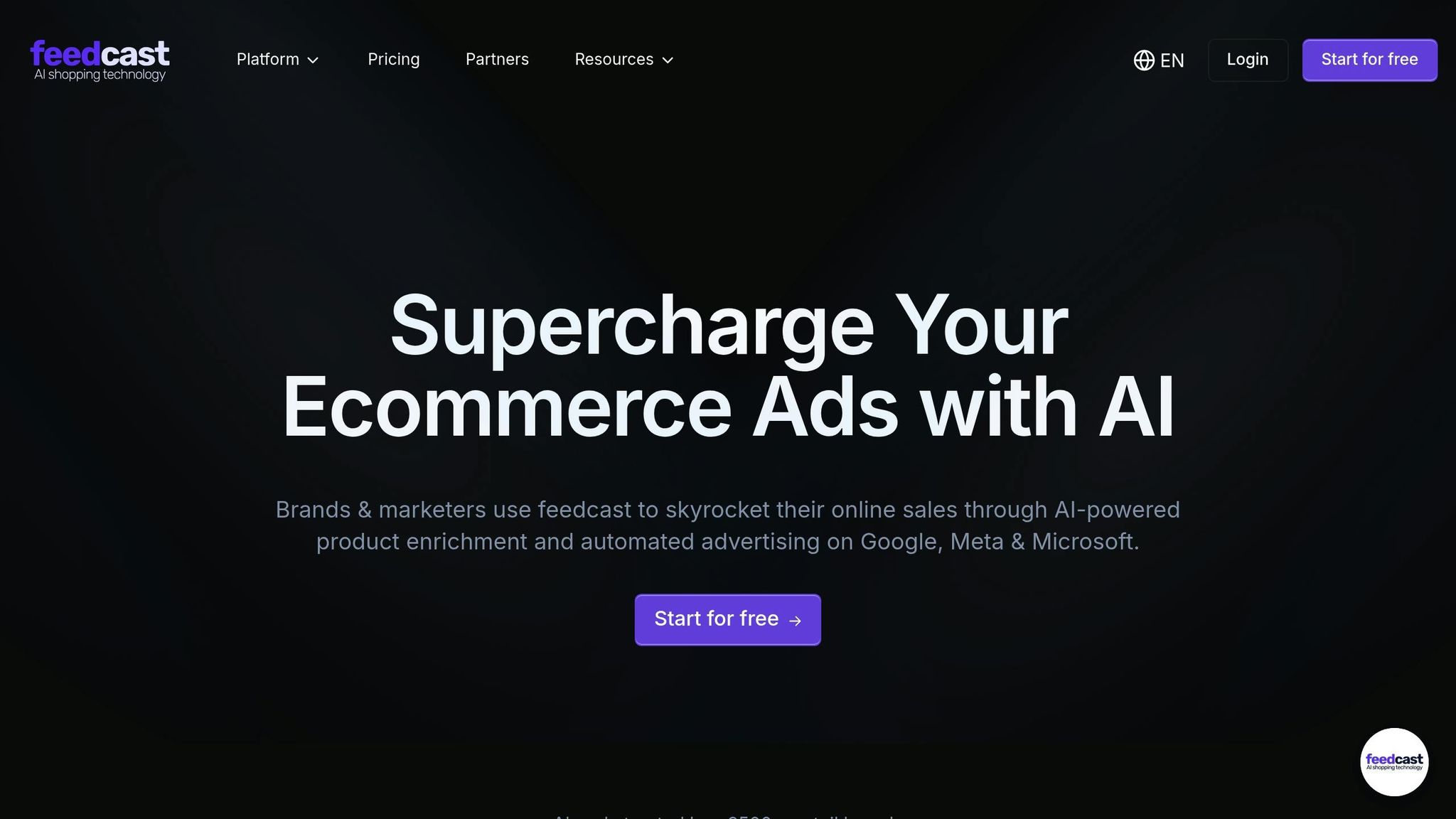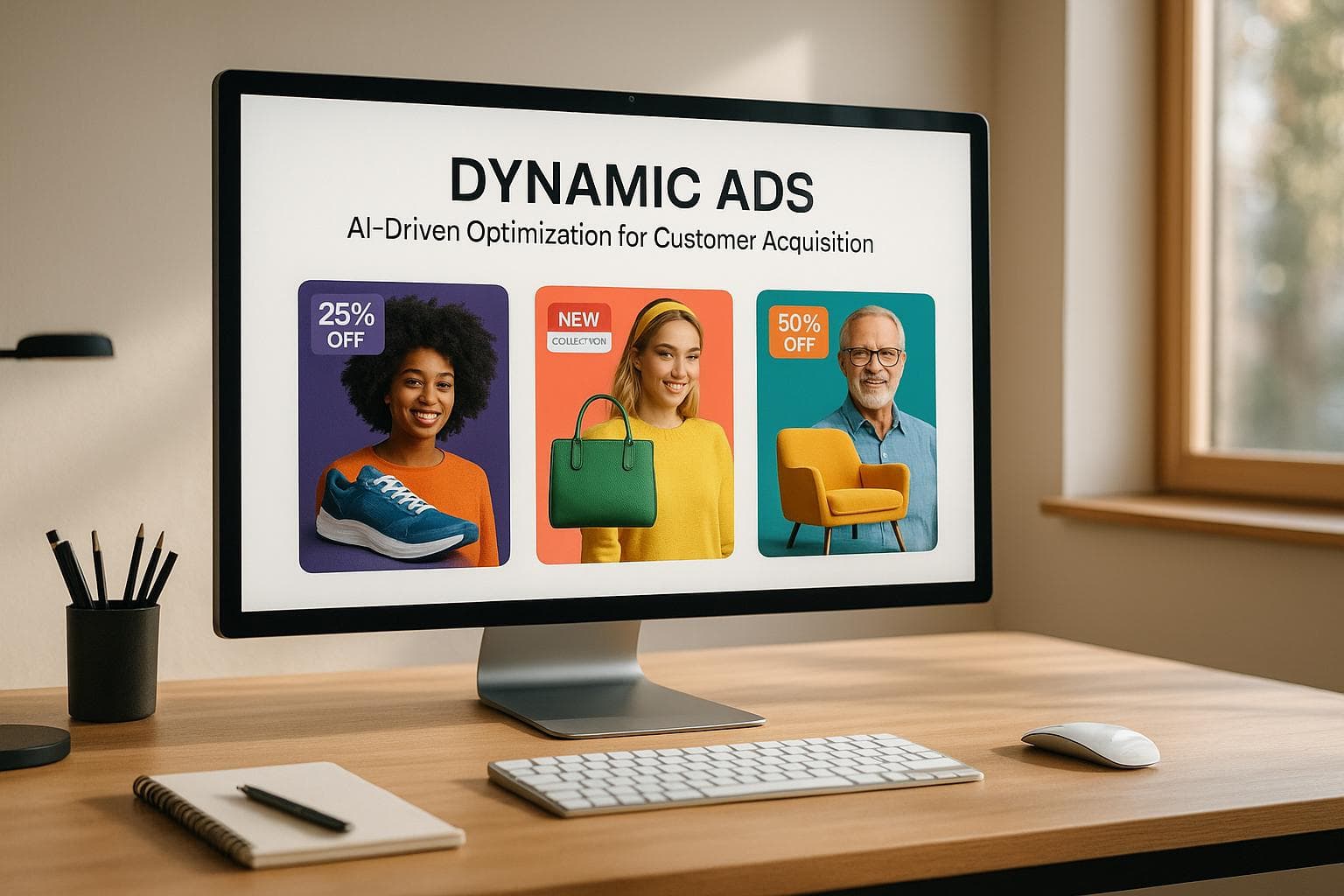How to Balance Personalization and Privacy
Explore how businesses can personalize experiences while respecting customer privacy through ethical data practices and transparency.
In a world where personalization drives customer loyalty but privacy concerns are at an all-time high, businesses face a tough challenge: how to meet customer expectations without crossing ethical lines. Here’s the bottom line:
- 71% of consumers expect personalized experiences, but 79% worry about data misuse.
- Companies that excel in personalization can reduce acquisition costs by up to 50% and boost revenue by 5–25%.
- However, 75% of people feel uneasy when brands seem to know too much about them.
To strike the right balance, businesses must focus on ethical data collection, transparency, and giving users control. The key steps include:
- Collect only what’s necessary: Use behavioral data over demographic details to minimize privacy risks.
- Get clear consent: Explain data use in plain language and offer granular options for users to opt in or out.
- Be transparent: Keep customers informed about how their data is used and provide easy access to privacy settings.
- Protect data: Use strong security measures like encryption and anonymization to safeguard customer information.
- Follow regulations: Stay compliant with laws like GDPR and CCPA to avoid fines and build trust.
Data-Driven Personalization: Balancing Targeted Marketing and Consumer Trust
Understanding Personalization and Privacy Issues
Personalization and privacy often pull in opposite directions. Customers enjoy tailored experiences but remain wary of how their personal data is collected and used. This balancing act is central to modern marketing strategies. Let’s break down why personalization is so impactful and the privacy challenges it brings.
Why Personalization Matters in Marketing
Personalization transforms how businesses connect with their audience. By delivering content and recommendations that feel relevant, it addresses individual needs and enhances the customer journey. For e-commerce companies, this can lead to real, measurable benefits.
When customers feel understood, they’re more likely to stick with a brand. For example, a shopper who sees product suggestions based on their browsing habits is far more likely to make a purchase compared to someone shown generic options. It’s a simple yet powerful way to drive loyalty and repeat business.
Online shopping, unlike in-store experiences, lacks a personal touch. Personalization bridges this gap with features like tailored product recommendations, customized email campaigns, and dynamic website content. These tools create a sense of individualized service, delivering the right message to the right person at just the right time.
The Privacy Trade-Off
Achieving personalization requires data - lots of it. Browsing habits, purchase histories, and demographic details are all critical for crafting tailored experiences. But this reliance on data naturally raises privacy concerns.
One major issue is data misuse. When companies use customer data without clear consent or share it with third parties in secret, trust erodes. A well-known example is Target’s pregnancy prediction algorithm, which used purchase data to send maternity-related offers to a teenager before she had told her family she was pregnant. This incident exposed how overstepping boundaries can backfire [2].
Regulations add another layer of complexity. By 2025, it’s estimated that 75% of global data will fall under data protection laws [1]. Companies that fail to comply risk hefty fines and damage to their reputation. Transparency and adherence to these rules aren’t optional - they’re essential.
Then there’s the issue of intrusiveness. When personalization feels too precise, it can make customers uneasy. In fact, 75% of people report discomfort when brands appear to know too much about them - like showing ads for items they only briefly considered buying [1].
Trust is the foundation that holds all of this together. While 91% of consumers prefer brands that are upfront about how they collect and use data, 80% are hesitant to share personal information with companies they don’t trust [1]. This creates a tricky situation: businesses need data to personalize effectively, but they must also earn the trust required to collect it ethically.
The stakes are even higher when dealing with sensitive information like health or financial data. Crossing ethical boundaries here can lead to legal trouble and damage to a brand’s reputation. Marketers need to think carefully - not just about what data they can collect, but what they should collect and how it’s used.
Ultimately, respecting customer privacy isn’t just the right thing to do - it’s smart business. By building trust, companies can encourage customers to share information willingly, creating a stronger foundation for personalization. These challenges pave the way for the discussion on ethical data practices in the next section.
Best Practices for Ethical Data Collection and Use
Navigating the fine line between personalization and privacy can be tricky, but following ethical data practices helps build trust while ensuring responsible use of information. The key? Collect only what’s necessary and use it transparently.
Collecting Only Necessary Data
When it comes to data collection, less is more. Only gather the information you truly need - the kind that directly enhances customer experience or drives meaningful business results.
Start by defining clear goals for personalization. For example, if your aim is to recommend products, focus on behavioral data like browsing history or purchase patterns instead of collecting unnecessary personal details.
Behavioral data often outshines demographic data for personalization. Think about it: a person’s recent searches or time spent on specific product pages tells you much more about their current interests than static demographic information. This approach not only respects privacy but also delivers more relevant and timely results.
"Without big data analytics, companies are blind and deaf, wandering out onto the web like deer on a freeway." - Geoffrey Moore, Management Consultant and Author [3]
Regularly audit your data collection practices to ensure you’re staying on track. Review what you’re collecting and remove any information that doesn’t directly contribute to your goals. This keeps your data management streamlined and reduces privacy risks.
Once you’ve narrowed your focus to only essential data, make sure to secure clear and informed consent for its use.
Getting Clear User Consent
Consent is the cornerstone of ethical data practices. To build trust, use straightforward language and offer users real choices. Transparency, simplicity, and genuine options are essential to effective consent management.
Break down complex policies into easy-to-understand sections. For instance, instead of vague statements like "We process your data for legitimate business interests", explain clearly: "We use your browsing history to suggest products you might like."
| Consent Type | Description | Ideal When |
|---|---|---|
| Explicit Consent | Users confirm agreement through a clear action (e.g., clicking "I Accept") | Sensitive data, email marketing, detailed profiling |
| Opt-in Consent | Users actively agree by checking an unchecked box | Most data collection, newsletter signups |
| Granular Consent | Users choose specific data processing activities | Advanced personalization, multiple data uses |
Give users granular control over their data. For example, let them opt in to product recommendations while opting out of email marketing. Respect their preferences and make it easy for them to adjust their settings at any time.
Document every consent interaction, including the date, time, and method of agreement. This not only builds transparency but also protects both your business and your customers in case of disputes or questions.
Equally important is making it easy for users to withdraw consent. Offer simple options - like a privacy dashboard or an email request - to allow them to update or revoke their permissions. When consent changes, adjust your data processing practices immediately.
Making Data Use Transparent
Once you’ve obtained consent, keep the trust alive by being upfront about how you use customer data. Transparency isn’t just about having a privacy policy - it’s about consistently communicating with your customers.
Write a clear, easy-to-read privacy policy explaining what data you collect, why you collect it, and how it benefits the customer. Use short, labeled sections to break down complex topics and make the information approachable.
Be proactive about updates. If your data practices or privacy policy changes, notify customers directly. Whether through email or in-app notifications, keeping them informed reinforces your commitment to transparency.
Train your team on privacy best practices so they understand both the technical requirements and the trust implications of handling customer data. Everyone involved should know how to manage consent and maintain ethical standards.
Lastly, create accessible channels for customers to ask questions or share concerns about their data. Responding quickly and thoughtfully shows your dedication to transparency and strengthens customer relationships.
The goal is to make transparency feel empowering, not overwhelming. Focus on showing customers how their data is used to provide value while ensuring they remain in complete control of their information.
Giving Users Control and Building Trust
When it comes to earning and keeping customer trust, giving users control over their data is a game-changer. People are far more likely to stick with your brand when they feel they have a say in how their personal information is handled. By providing clear, accessible control options and being upfront about your data practices, you create a foundation of trust that benefits both sides.
User Control Options
Offering meaningful control goes beyond just slapping a basic opt-out button on your website. Instead, think about creating a preference center where customers can easily manage their data and communication settings. This could include options for adding or removing information, adjusting data-sharing preferences, and tailoring how they interact with your brand at every touchpoint.
For example, let customers decide how they want to be contacted. Some might prefer receiving product updates via email but want order notifications through text messages. By respecting these preferences, you show that you genuinely care about their individual needs.
A well-designed privacy settings center should include:
- Opt-out mechanisms for those who don’t want their data shared.
- Tools for users to view, update, or delete their data.
- A simple process for account deletion, ensuring users can leave on their own terms.
Here’s a quick look at some key control features and why they matter:
| Control Feature | What It Does | Why It Matters |
|---|---|---|
| Preference Center | Lets users manage data sharing and communication preferences | Gives users ownership of their experience |
| Data Access Tools | Allows users to view the data you have on them | Builds trust through transparency |
| Easy Deletion | Simplifies removing personal information | Respects user privacy and autonomy |
| Channel Selection | Lets users pick their preferred communication methods | Improves engagement by honoring their choices |
It’s also important to explain the benefits of data sharing. For instance, letting users know that sharing their data can result in personalized product recommendations or quicker customer service might encourage them to engage more. And don’t forget to regularly review and simplify these control options to ensure they remain user-friendly.
Using Transparency to Build Trust
Transparency isn’t just about having a privacy policy buried somewhere on your site. It’s about keeping the lines of communication open and honest with your customers. Studies show that 94% of consumers prefer brands that are upfront about their practices, and 87% are more likely to stick with businesses that demonstrate transparency [4].
Clear and straightforward privacy statements can go a long way in building trust. Apple, for example, has set a strong standard in this area:
"At Apple, your trust means everything to us... That's why we respect your privacy and protect it with strong encryption, plus strict policies that govern how all data is handled….We believe in telling you up front exactly what's going to happen to your personal information and asking for your permission before you share it with us." – Tim Cook, CEO, Apple [5]
Transparency has a direct impact on loyalty. Research shows that 94% of consumers are more likely to stay loyal to a brand committed to full transparency, and 56% will remain loyal for life when a company consistently demonstrates openness [6].
To build on this, create accessible channels where customers can share feedback or raise concerns about your data practices. Responding quickly and honestly to these concerns not only resolves issues but also strengthens the emotional connection between your brand and its audience.
A great example of transparency in action is Apple’s 2015 website update. The company prominently highlighted its commitment to data security and privacy, including a personal message from Tim Cook. This move earned Apple the highest possible score - six stars - from the Electronic Frontier Foundation, a huge improvement from its 2013 rating.
Regularly gather customer feedback through surveys to understand how well your transparency efforts are working. Use this input to fine-tune your communication strategies and meet customer expectations more effectively.
And remember, transparency isn’t just about data. Be open about your pricing, share your sustainability initiatives, and ensure quality interactions across all customer touchpoints. Taking this broader approach to transparency helps build a stronger, more trusting relationship with your audience. These efforts also lay the groundwork for solid data security and compliance in your marketing strategies.
sbb-itb-0bd1697
Data Security and Legal Compliance
Protecting customer data is the cornerstone of ethical personalization. By combining solid technical safeguards with strict legal compliance, businesses can build a foundation of trust that customers can rely on.
Strong Data Security Practices
Keeping customer data safe requires more than just basic security measures. A multi-layered strategy is essential. Techniques like data masking, pseudonymization, tokenization, and advanced encryption methods - such as homomorphic encryption - help protect sensitive information without sacrificing its analytical usefulness. Regular security checks, including penetration testing and vulnerability scans, ensure systems remain secure.
Once these measures are in place, anonymizing data becomes a key step in reducing privacy risks. Anonymization techniques make it possible to use data for analysis while minimizing the chance of exposing personal information.
Using Anonymous Data to Reduce Risk
Anonymized data strikes a balance between personalization and privacy. Under GDPR, companies can collect and use anonymized data without needing consent, as long as all identifying details are removed [9]. Methods like generalization, controlled data perturbation, k-anonymity, and synthetic data generation help achieve this balance [9] [10].
Still, anonymization isn’t foolproof. Data can sometimes be re-identified when combined with external sources [10]. To address this, businesses should work closely with legal experts and adopt a compliance-by-design approach throughout the entire data lifecycle.
Following Privacy Laws and Regulations
Adhering to privacy laws is just as important as implementing technical safeguards. Navigating these regulations requires a clear understanding of both their specifics and underlying principles. For example, while behavioral advertising is allowed under current data privacy laws, it must meet strict conditions [7]. Under GDPR, consent is the primary legal basis for personalized advertising in EU markets, as “Legitimate Interest” and “Fulfillment of a Contract” are not considered valid justifications by the European Data Protection Board [7].
In the United States, the California Consumer Privacy Act (CCPA), amended by the California Privacy Rights Act (CPRA), defines cross-context behavioral advertising and gives residents the right to opt out. Violations, especially those involving minors under 16, can result in fines of up to $7,500 [8]. As Ken LaMance, Attorney & General Counsel at LegalMatch, emphasizes:
"Obtaining and managing consent is crucial for building trust, mitigating legal risks, and ensuring long-term success. Consent management is no longer a nice-to-have; it's a must-have for businesses operating online today." [7]
Other states, including Virginia, Connecticut, and Colorado, offer similar rights, such as the ability to opt out of targeted advertising and profiling, along with stringent notification requirements [7]. Meanwhile, the EU AI Act may soon introduce additional rules for businesses using AI in advertising [7].
To stay compliant, businesses need robust consent management systems that cater to different legal requirements. This includes offering clear notices about data use, providing easy opt-out options, and keeping detailed records of consent. As LaMance notes:
"Investing in a strong consent management strategy can protect your business, safeguard your customers' privacy, and build a reputation as a trustworthy and responsible organization. Remember, data privacy is not just a legal obligation; it's a strategic imperative." [7]
Statistics show that when customers trust a business with their data, they’re more likely to share it, enabling better personalized experiences [7]. By combining legal compliance with strong technical protections, companies can create a well-rounded framework for ethical personalization.
Using Feedcast for Privacy-Focused Personalization

Feedcast takes a practical approach to ethical data practices, offering tools that make privacy-focused personalization a reality. Its unified platform helps businesses create targeted campaigns while keeping privacy at the forefront. By centralizing data management, Feedcast simplifies compliance and reduces the headaches of managing customer data across multiple advertising platforms.
Centralized Data Management and Transparency
Handling customer data across various platforms often leads to compliance headaches. Feedcast solves this by consolidating all your advertising accounts into a single, streamlined dashboard. This setup not only simplifies tracking regulatory requirements but also ensures consistent privacy policies across the board. Considering that 40% of data professionals see data centralization as a key factor in improving data quality and reliability, Feedcast’s approach addresses a critical need [13].
Building on established data governance practices, Feedcast enforces uniform privacy protocols across all channels. When you connect platforms like Google, Meta, and Microsoft Ads, Feedcast’s unified semantic layer automatically applies data governance and compliance policies to every channel [12]. This eliminates the need to create separate policies for each platform.
Feedcast also makes navigating different regulatory landscapes - like those in the United States and Europe - more manageable. It features an automated alert system that notifies you about upcoming compliance audits or evaluations, keeping you prepared for regulatory demands [11].
"Once the business data have been centralized and integrated, the value of the database is greater than the sum of the preexisting parts" [13].
AI Tools That Protect Privacy
Feedcast’s AI-powered tools are designed to balance personalization with privacy. Instead of gathering unnecessary customer data, its AI focuses on enriching product data to enhance ad performance. This aligns with privacy-by-design principles, prioritizing product-level insights over detailed customer profiling.
The platform’s smart targeting tools help businesses reach specific audiences using native targeting options from connected platforms. Feedcast’s AI recommends audience parameters based on product categories and past performance, enabling effective personalization without storing sensitive customer details. This approach addresses a major consumer concern - 63% of people say secure data collection and storage is the most important factor when deciding whether to share personal information with a business [13].
This thoughtful use of AI naturally extends to performance monitoring tools that respect privacy.
Monitoring Performance While Staying Ethical
Feedcast’s analytics dashboard offers a comprehensive way to track campaign performance without compromising customer privacy. By aggregating data from all connected advertising platforms, it provides insights into key metrics like return on ad spend (ROAS), conversion rates, and audience engagement. Instead of relying on personal customer data, Feedcast focuses on performance metrics to guide campaign adjustments.
The platform’s performance segmentation tools highlight top-performing products and audiences using aggregated data rather than individual customer profiles. This allows businesses to identify trends and refine their campaigns ethically. As Eric McGee noted:
"In the next two to three years, consumer data will be the most important differentiator. Whoever is able to unlock the reams of data and strategically use it will win" [13].
By leveraging aggregated insights, Feedcast proves that businesses don’t need invasive data collection to achieve effective personalization.
Feedcast also keeps an eye on compliance by flagging any anomalies in campaign performance. This ensures that businesses maintain ethical practices while optimizing results.
With Feedcast, businesses can achieve meaningful advertising outcomes by focusing on aggregated data, product performance, and audience engagement - all while respecting customer privacy and meeting regulatory standards.
Conclusion: Finding the Right Balance
Striking the right balance between personalization and privacy goes beyond simply following regulations - it’s about earning and maintaining customer trust. When brands prioritize ethical practices, give users control, and stay compliant, they can create campaigns that deliver results without overstepping boundaries.
A good starting point is to collect only the data you truly need and clearly explain how it will be used. This kind of transparency isn’t just about meeting legal requirements - it’s a way to build trust. For instance, when 80% of customers hesitate to share personal information with brands they don’t trust, being upfront about data use can set you apart [1]. Offering customers the ability to access, update, or delete their data strengthens that trust even further.
At the same time, the legal landscape around privacy is constantly evolving. Compliance isn’t something you can check off once and forget - it requires ongoing effort, including regular audits, to keep up with new regulations and shifting consumer expectations. Mismanaging personalization isn’t just a missed opportunity; it can seriously harm your reputation.
Overdoing personalization is another pitfall. When 75% of customers feel overly personalized experiences are intrusive, it’s clear that finding the right level is key [1]. Personalization should feel helpful, not invasive, and past missteps in this area show how easily trust can be lost.
The future lies in privacy-first personalization. By using tools like Feedcast to centralize and manage data responsibly, brands can deliver meaningful, relevant experiences while respecting privacy. Techniques like contextual targeting, anonymized data, and relying on first-party information allow companies to connect with their audience without crossing the line.
FAQs
How can businesses personalize campaigns while respecting customer privacy?
To create personalized campaigns while respecting privacy, businesses should adhere to data minimization principles - collect only the information truly needed to craft tailored experiences. Steer clear of gathering data that doesn't directly support your personalization efforts.
Equally important is securing clear and informed consent from customers. Be upfront about what data you’re collecting, why you need it, and how it will be used. Make it a habit to regularly review and refine your data collection methods to stay compliant with privacy laws and uphold customer trust. By focusing on ethical data practices and open communication, businesses can strike the right balance between personalization and privacy.
How can businesses clearly communicate their data usage policies to customers?
To make your data usage policies easy to understand, use straightforward and simple language. Clearly outline what data is being collected, why it’s necessary, and how it will be stored or used. Give customers the ability to make choices about their data by offering opt-in or opt-out options, and be upfront about your practices to establish trust.
Make it a habit to update your privacy policies whenever there are changes, and ensure your team is prepared to explain them in a way that anyone can follow. Being open and clear goes a long way in building a strong relationship with your audience while respecting their privacy.
How can businesses earn consumer trust while addressing privacy concerns?
To build trust with privacy-conscious consumers, businesses should prioritize both transparency and control. Make it clear what data is being collected, why it’s necessary, and how it will be used. Privacy policies should be written in plain language, avoiding legal jargon, so they’re easy for everyone to understand.
Give consumers the power to make choices by offering opt-in and opt-out options for data collection and personalization. Additionally, showcase robust data protection measures like secure storage systems and adherence to privacy laws. When people see that a company genuinely respects their privacy, they’re far more likely to feel comfortable sharing their information.
Yohann B.










